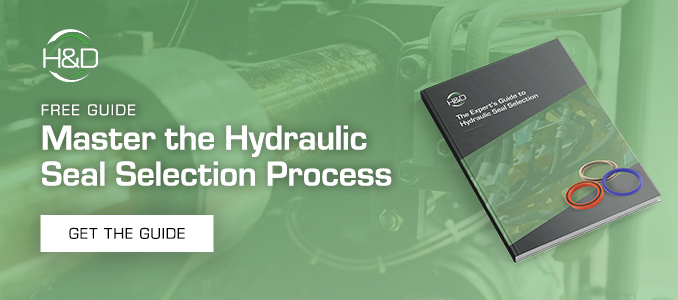by Russell Wood
In the semiconductor industry, a lot depends on selecting the right semiconductor seal.
Why? Particle generation is a key concern throughout the semiconductor manufacturing process and can be a cause for seal failure. Moreover, due to the many process stages needed to complete work on a wafer, if particle damage occurs early in the process, and is not detected, the cost to reproduce the wafer can be great.
This is why choosing the right semiconductor seal, with the right parameters, is one of the most cost-beneficial choices a manufacturer can make. Here are five questions to ask yourself — and your semiconductor seal provider — to help determine the best semiconductor seal for your application.
1. Will the recommended seal be compatible with the chemical exposure required of the application?
Because particle generation often is related to chemical attack, knowing what chemicals, plasma, or other substances your seal will be exposed to can prevent seal failure and leaks, in turn extending the lifespan of your semiconductor seal. These chemical exposures influence the selection of the right seal or seal composite for a semiconductor application, therefore, knowing the specifics of these exposures is key to choosing the right seal, the first time.
2. What is the temperature capability of the recommended seal material?
Seals with poor mechanical properties, such as limited temperature capability, can also lead to premature semiconductor seal failure. In more demanding applications where extreme temperatures are present, composites such as perfluoroelastomer O-rings and seals may be required. While these composites are more expensive, these seals have unique temperature capabilities ranging up to 315° C. Additionally, they generate fewer harmful particles, which is especially important in upstream usage. There are various options for composite materials, so knowing the maximum temperature at the seal location can help determine the most cost-effective semiconductor seal for your application.
3. Does the seal you are sourcing operate upstream or downstream?
In the semiconductor industry, there are varying requirements depending on where the seal is located. For example, if a seal is upstream, the low/no particle needs greatly exceed the requirements of a downstream semiconductor seal. In some applications, less expensive FKM, VQM or even new “bridge materials” may satisfy customer requirements at far lower costs. Knowing if your seal operates upstream or downstream in your manufacturing process can inform the direction you take when it comes to composite choice and cost expectations.
4. Is your current semiconductor seal working well, or are you looking for improved performance or longer life?
A seal’s composite affects its ability to handle things such as low compression set, poor elongation, or adhesion problems. This is why, when sourcing a new seal for your application, it is important to consider what you need from your seal. If the seal is working well as is, then a simple replacement may be all you need. However, if it has failed before its anticipated lifespan, or you are experiencing a high level of particle contamination, it might be time to consider new options. Knowing your end goal on the front end can help your seal sourcing specialist know what the best composite recommendation for your new seal will be.
5. Are you able to look at alternative compounds?
Many times companies are required by warranty or other internal operating procedures to replace a worn-out seal with a specific brand or type of seal. This is not always the best or most cost-effective option. If you know that you have the ability to look at options beyond just replacing your current name-brand seal, cost savings — as well as lifetime performance — could be increased.
Like most industries, the semiconductor industry has some very specific nuances when it comes to selecting the right seal for its applications. That’s why working with a team of experienced engineering professionals can make the process of new seal selection much easier. If you have questions or would like to talk more about semiconductor seal selection with one of H&D’s expert seal engineers, contact us.
About H&D Distributors
For over 40 years, H&D Distributors has provided expert sealing solutions for OEM and MRO customers in various industries where productivity is key, including hydraulics, oil and gas, and semiconductor. Leveraging in-house engineering and testing expertise, exceptional customer service, and a global network of top sealing manufacturers, H&D's goal is to deliver solutions for its customers’ pressing sealing challenges expertly, accurately, and on time.
 |
About Russell WoodRussell Wood, General Manager at H&D, leads the H&D Technical Team as well as its Inside Sales Team. He has over 30 years of experience in the seal industry. |




